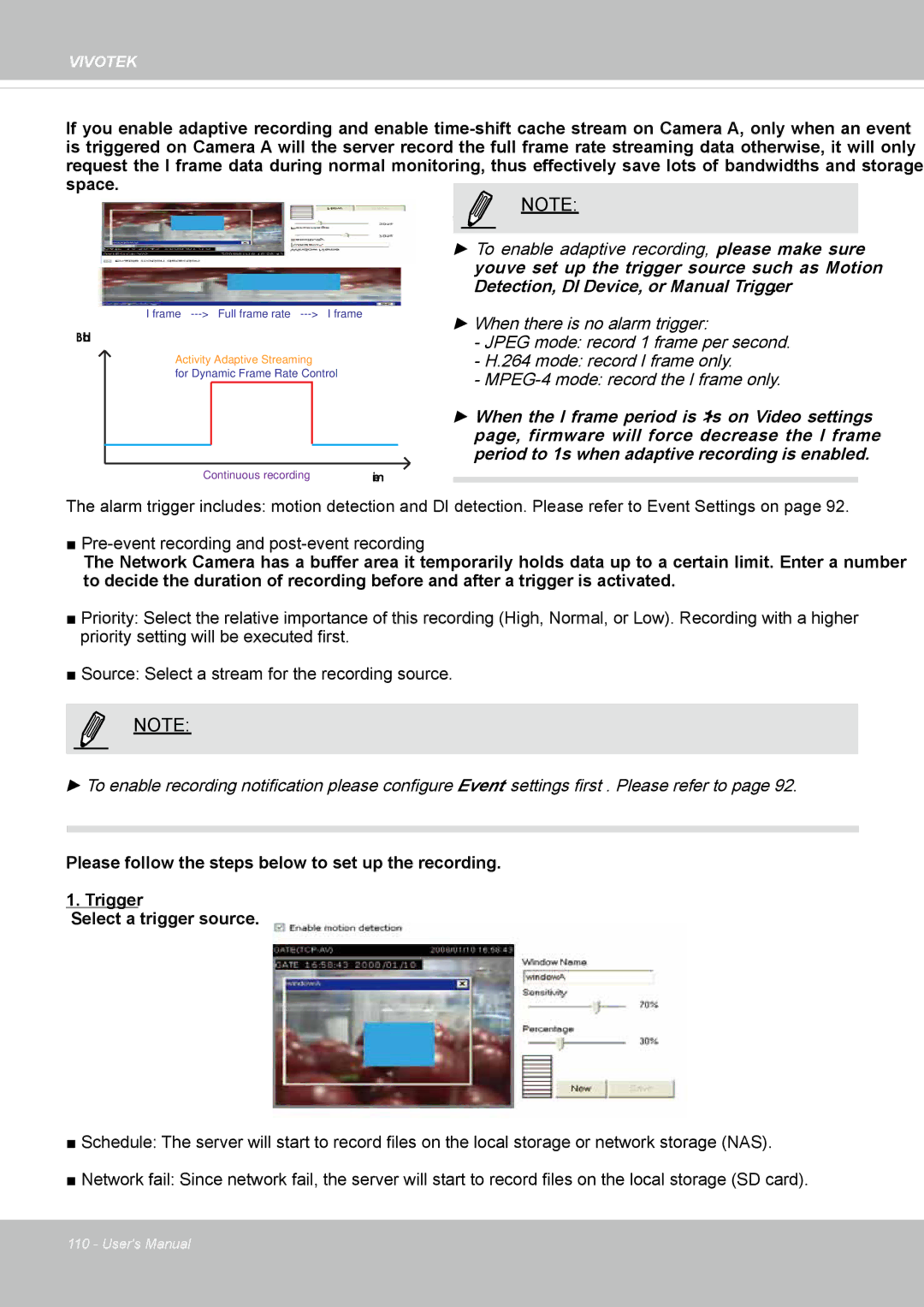
VIVOTEK
If you enable adaptive recording and enable
NOTE:
Bandwidth |
|
I frame | I frame |
Bandwidth |
|
Activity Adaptive Streaming |
|
for Dynamic Frame Rate Control | |
Continuous recording | Time |
►To enable adaptive recording, please make sure you’ve set up the trigger source such as Motion Detection, DI Device, or Manual Trigger.
►When there is no alarm trigger:
-JPEG mode: record 1 frame per second.
-H.264 mode: record I frame only.
-
►When the I frame period is >1s on Video settings page, firmware will force decrease the I frame period to 1s when adaptive recording is enabled.
The alarm trigger includes: motion detection and DI detection. Please refer to Event Settings on page 92.
■
The Network Camera has a buffer area; it temporarily holds data up to a certain limit. Enter a number to decide the duration of recording before and after a trigger is activated.
■Priority: Select the relative importance of this recording (High, Normal, or Low). Recording with a higher priority setting will be executed first.
■Source: Select a stream for the recording source.
NOTE:
► To enable recording notification please configure Event settings first . Please refer to page 92.
Please follow the steps below to set up the recording.
1. Trigger
Select a trigger source.
■Schedule: The server will start to record files on the local storage or network storage (NAS).
■Network fail: Since network fail, the server will start to record files on the local storage (SD card).
110 - User's Manual
